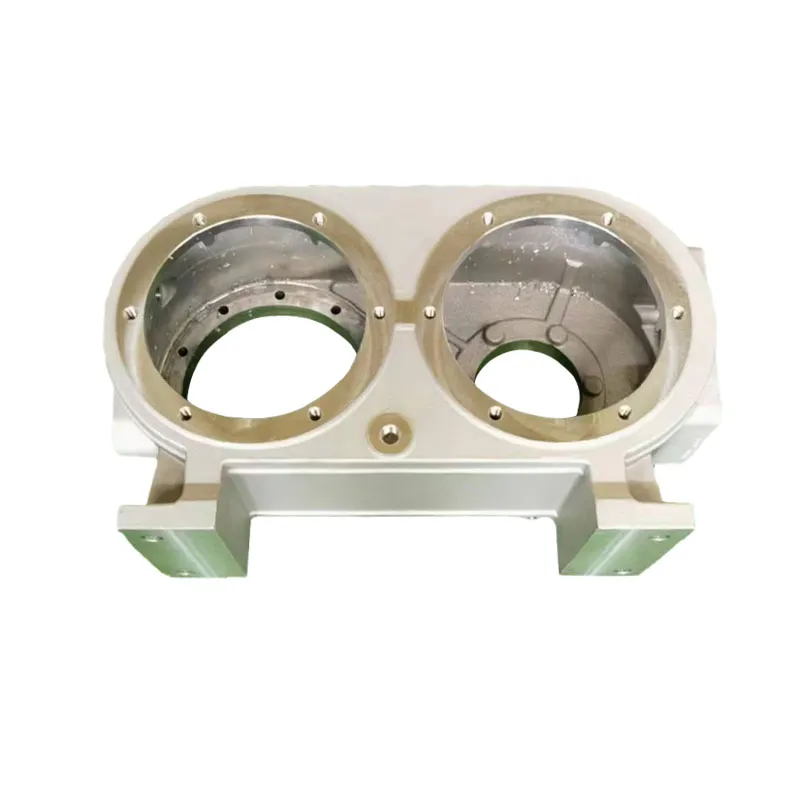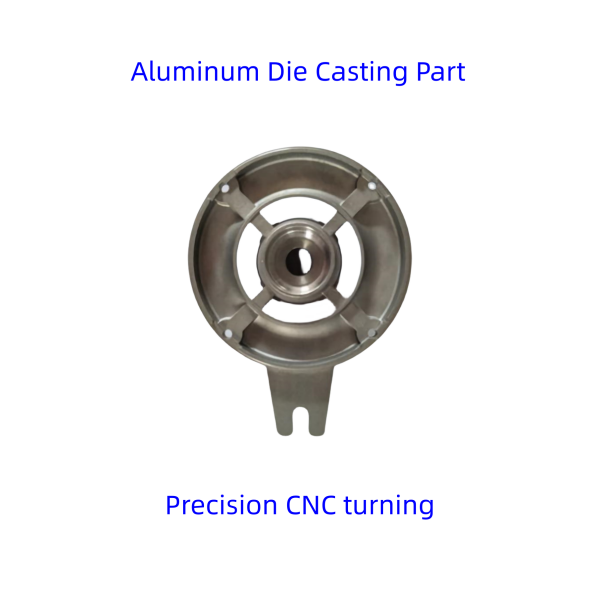Learn how Precision aluminum casting supports detailed designs in production
Discovering the Cutting-edge Procedures Behind Modern Light Weight Aluminum Shop Procedures
Modern aluminum foundry procedures are undertaking significant improvement. Automation and AI are improving production techniques, improving both effectiveness and precision. The integration of 3D printing is enhancing mold and mildew creation, while sustainability practices are becoming a lot more essential. Each of these developments plays a key function in redefining the market. The implications of these changes prolong past plain manufacturing performance. What opportunities and challenges exist ahead for light weight aluminum foundries in this evolving landscape?
The Function of Automation in Light Weight Aluminum Foundries

Automation contributes to enhanced safety standards within the foundry environment. By transferring dangerous jobs to makers, human employees can concentrate on managerial functions and quality assurance, decreasing the threat of crashes. Additionally, information analytics stemmed from automated procedures give useful understandings right into operational efficiency, leading to far better decision-making and constant renovation. As the demand for aluminum items expands, the fostering of automation technologies will likely expand, even more changing the landscape of light weight aluminum foundry procedures.
Innovations in Casting Technologies
Current advancements in casting technologies are transforming aluminum factory procedures. Innovations such as 3D printing integration, progressed alloy solutions, and automated procedure optimization are boosting effectiveness and product top quality. These advancements are crucial in meeting the evolving needs of the market.
3D Printing Integration
Incorporating 3D printing modern technology into light weight aluminum foundry procedures has revolutionized conventional casting approaches, boosting both performance and accuracy. This ingenious technique permits the quick production of intricate mold and mildews and cores, considerably lowering lead times and material waste. By using additive production, foundries can create complex geometries that were difficult or previously challenging to attain with standard methods. The versatility of 3D printing additionally allows fast design modifications, cultivating a more agile manufacturing procedure. In enhancement, this combination sustains using lightweight structures, which is progressively vital in industries such as auto and aerospace. As aluminum shops continue to embrace 3D printing, they position themselves at the forefront of technical improvement, driving improvements in product top quality and operational capacities.
Advanced Alloy Formulations
The growth of advanced alloy formulas has actually significantly boosted casting innovations in light weight aluminum shop operations. These formulations incorporate different aspects, such as magnesium, silicon, and copper, to improve mechanical homes and thermal resistance. By customizing the composition of aluminum alloys, manufacturers can achieve particular performance attributes that satisfy the needs of diverse applications, from auto elements to aerospace structures. Making use of advanced alloys additionally adds to decreased weight and boosted strength, which are essential consider modern-day engineering. Furthermore, innovations in alloy advancement allow much better fluidity during spreading, causing boosted surface coatings and minimized issues. On the whole, progressed alloy formulas stand for a significant jump onward, positioning aluminum foundries to meet the advancing demands of various industries properly.
Automated Refine Optimization
Developments in casting innovations have actually led the way for computerized process improvement in light weight aluminum foundry operations. By incorporating innovative software application and real-time data analytics, factories can now enhance manufacturing processes and enhance quality assurance. Automated systems monitor variables such as air conditioning, stress, and temperature level rates, allowing for instant changes that decrease issues and waste. In addition, machine discovering algorithms evaluate historical efficiency information to anticipate optimal settings, consequently raising effectiveness and reducing cycle times. Robotics also play a significant role, handling repeated jobs that boost security and accuracy. Overall, these innovations not only drive functional efficiency yet also make it possible for factories to fulfill the growing need for high-quality light weight aluminum parts in various markets.
Smart Production and Industry 4.0 Integration
The combination of Smart Production and Market 4.0 within light weight aluminum foundries is changing operational performance. By leveraging IoT innovations, automation, and robotics, factories can maximize production processes and minimize downtime. Furthermore, information analytics supplies critical understandings that enhance decision-making and drive continual renovation.
IoT in Shop Procedures
As suppliers increasingly accept the Internet of Things (IoT), shop operations are experiencing a transformative shift towards clever production and Industry 4.0 combination. Aluminum Foundry. IoT innovations enable real-time data collection and evaluation, enhancing decision-making processes and operational efficiency. Sensing units and connected gadgets monitor tools efficiency, product use, and ecological problems, enabling for aggressive upkeep and source optimization. This connectivity cultivates a much more nimble manufacturing setting, where changes can be made quickly in response to market needs. In addition, IoT promotes improved traceability and high reference quality control, as data from the whole manufacturing cycle can be quickly accessed and analyzed. On the whole, the assimilation of IoT in factory operations considerably enhances efficiency and drives innovation in light weight aluminum production processes
Automation and Robotics Combination
Automation and robotics integration is reinventing aluminum factory procedures by boosting effectiveness and precision. This transformative method streamlines procedures such as molding, visit homepage pouring, and finishing, reducing human mistake and increasing output consistency. By employing innovative robot systems, foundries can attain higher manufacturing rates while keeping strict quality standards. Automated systems also allow real-time monitoring and flexible control, permitting swift adjustments to production parameters. Additionally, the integration of robotics lessens labor expenses and minimizes safety and security dangers related to manual handling of molten metal. As shops welcome wise manufacturing principles fundamental in Sector 4.0, the harmony in between automation and robotics strengthens their affordable edge, leading the method for sustainable development and advancement in the light weight aluminum spreading sector.
Information Analytics for Efficiency
Utilizing data analytics significantly improves efficiency within light weight aluminum factory procedures, aligning with smart production and Market 4.0 principles. By leveraging real-time information collection and analysis, shops can monitor manufacturing processes, forecast tools failures, and enhance source allowance. This data-driven approach helps with insightful decision-making, making it possible for managers to enhance and recognize traffic jams operations. In addition, predictive analytics encourages factories to prepare for market demands, therefore minimizing waste and making sure prompt product distribution. Integration of data analytics with IoT devices boosts operational presence, fostering a proactive upkeep culture. Inevitably, implementing these sophisticated analytical methods not just enhances performance but also drives advancement, placing aluminum foundries to meet the developing demands of the sector while maintaining affordable edges in a rapidly transforming landscape.
Lasting Practices in Light Weight Aluminum Casting
While the aluminum spreading market has actually typically faced ecological challenges, lots of factories are currently adopting sustainable practices to reduce their impact (Aluminum Foundry). A significant emphasis has gotten on recycling aluminum scrap, which not just lowers waste but additionally saves energy compared to primary aluminum production. Innovative linked here melting innovations, such as induction heaters, enhance energy effectiveness and reduced greenhouse gas discharges
Additionally, factories are implementing closed-loop water systems to lessen water usage and decrease thermal air pollution. Making use of environmentally friendly binders in mold-making processes is acquiring grip, more decreasing hazardous exhausts.
Additionally, some centers are purchasing renewable resource sources to power operations, lining up with worldwide sustainability goals. By incorporating these methods, the aluminum casting sector is progressing toward a more environmentally accountable future, demonstrating that financial growth can exist side-by-side with eco-friendly stewardship - Aluminum Foundry. These efforts mirror a dedication to sustainability and the value of ecological responsibility in production
Quality Assurance Innovations
As the aluminum casting sector breakthroughs towards sustainability, the value of high quality control developments ends up being significantly evident. Modern aluminum foundries are embracing advanced innovations to enhance their high quality guarantee processes. Techniques such as real-time surveillance and data analytics allow makers to find disparities and defects early in the production cycle. Implementing automatic inspection systems furnished with device learning formulas assurances that products fulfill rigorous top quality criteria while decreasing human mistake.
The integration of non-destructive testing techniques, such as radiographic and ultrasonic examinations, offers much deeper understandings right into the stability of castings without harming the material. These innovations not just boost product dependability but likewise lower waste, aligning with sustainability goals. On top of that, the adoption of standard top quality frameworks aids simplify operations across various shops, guaranteeing consistency in result. Jointly, these innovations are improving top quality control, promoting a culture of excellence within the light weight aluminum casting field.
Future Patterns in Light Weight Aluminum Shop Operations
What innovations lie ahead for aluminum shop procedures? The future of light weight aluminum shops is positioned for transformation via innovations in automation, artificial knowledge, and sustainable methods. The assimilation of robotics and automated systems is expected to improve effectiveness and precision in the spreading processes, reducing human mistake and labor expenses. In addition, AI-driven analytics will certainly make it possible for real-time monitoring and predictive maintenance, enhancing functional performance and reducing downtime.
Sustainability continues to be a focal point, with factories progressively embracing green methods, such as using recycled aluminum and creating low-emission melting technologies. Advancements in 3D printing are additionally expected to change mold-making, permitting intricate geometries and reduced material waste. As the sector welcomes digitalization, data-driven decision-making will become essential, enabling factories to react swiftly to market demands. Jointly, these trends promise to redefine aluminum factory operations, making them a lot more reliable, sustainable, and versatile to future obstacles.

Frequently Asked Questions
What Safety And Security Measures Are Applied in Aluminum Factory Workflow?
Light weight aluminum foundry operations apply different precaution, including personal safety equipment, ventilation systems to handle fumes, routine safety training, emergency situation reaction strategies, and rigid surveillance of temperature level and devices to stop mishaps and warranty employee safety.
How Do Shops Take Care Of Labor Force Educating for New Technologies?

What Products Are Commonly Recycled in Aluminum Foundries?
Light weight aluminum foundries commonly reuse scrap aluminum, including post-consumer products like drink cans, automobile parts, and building and construction materials. This recycling procedure decreases waste and saves resources, adding to an extra sustainable light weight aluminum production industry.
Just How Does Aluminum Spreading Impact the Setting?
Light weight aluminum casting impacts the atmosphere via energy-intensive procedures, greenhouse gas discharges, and potential neighborhood pollution. Nevertheless, innovations in reusing and sustainable techniques can reduce these impacts, advertising a much more green method to aluminum manufacturing.
What Are the Normal Lead Times for Light Weight Aluminum Casting Projects?
Common lead times for aluminum spreading projects vary considerably, generally ranging from 2 to 6 weeks. Variables influencing these timelines include intricacy, order dimension, and product availability, affecting overall manufacturing routines in shop operations.
Automation increasingly plays an essential role in light weight aluminum foundries, boosting performance and precision in the production procedure. Developments in casting innovations have actually paved the means for computerized process enhancement in aluminum factory procedures. Using data analytics substantially boosts efficiency within light weight aluminum shop procedures, aligning with smart production and Industry 4.0 concepts. A substantial emphasis has actually been on recycling light weight aluminum scrap, which not just lowers waste however additionally saves energy compared to key light weight aluminum manufacturing. Aluminum factories typically reuse scrap light weight aluminum, including post-consumer items like beverage canisters, automobile parts, and construction products.